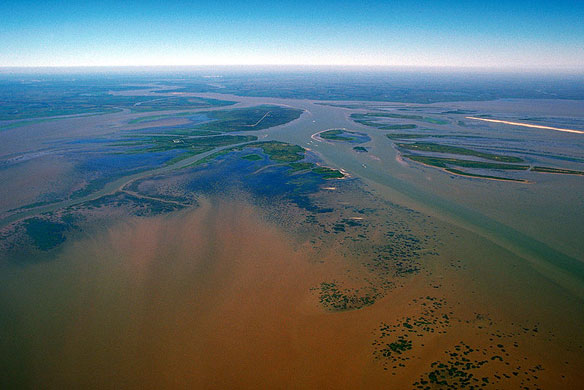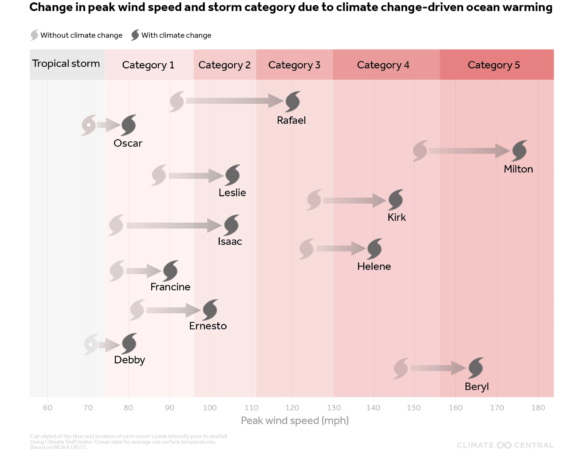
The delta of the Atchafalaya River on the Gulf of Mexico. View is upriver to the northwest. Dead zones off the coast, are fueled by nutrient runoff from agricultural and other human activities in the Mississippi River watershed, which stimulates an overgrowth of algae that sinks, decomposes and consumes most of the life-giving oxygen supply in bottom waters. These chronic, recurring hypoxic zones every summer represent a significant threat to Gulf coastal ecosystems. Photo and caption: ©© U.S. Army Corps of Engineers
Excerpts;
Ocean experts had predicted a large “dead zone” area in the Gulf of Mexico this year, and according to the results from a Texas A&M University researcher just back from studying the region, those predictions appear to be right on target.
Steve DiMarco, professor of oceanography and one of the world’s leading experts on the dead zone, says he and a Texas A&M team surveyed areas off the Texas-Louisiana coast last week and found large areas of oxygen-depleted water, an area covering roughly 3,100 square miles, or about the size of Delaware and Rhode Island combined.
“We found hypoxia (oxygen-depleted water) just about everywhere we looked…”








